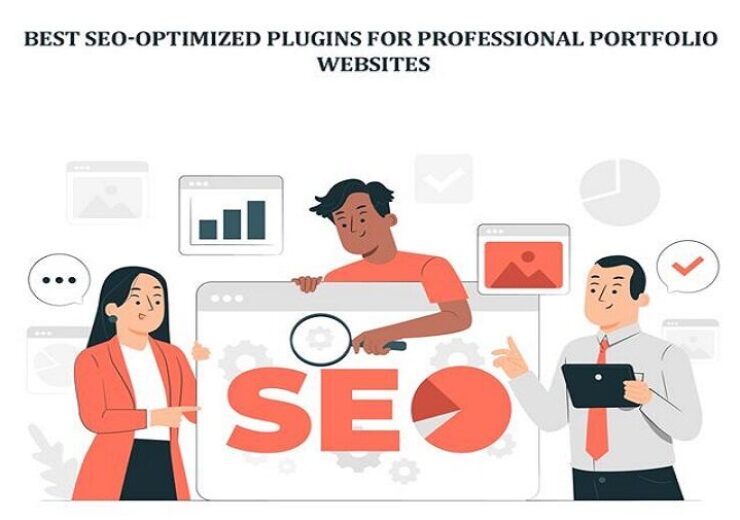Advanced SEO Techniques to Rank Higher in Competitive Niches

Have you ever imagined why some websites are ranked and some are not? You can write great articles and still nothing works for you. It looks like your competitors are other and you are still stuck dancing on page one. It can get annoying.
The reality there is, is that SEO is way more complicated than just putting in keywords. It is like a game of chess. It is a mix of psychology and data, and a great deal of patience. In competitive industries like, every click, and every second of user’s attention, everything contributes.
So today, we go deep. more than the basics. We will go into the core of SEO that will differentiate websites which are still seen as quiet, from the ones that introduced the internet. Let us get into it.
1. Understand Search Intent
People don’t just type words. They ask for something. Help, solutions, comparisons, answers. That’s intent. And Google? It’s obsessed with figuring it out.
There are four types. Informational. Navigational. Transactional. Commercial. You know this. But here’s the twist in competitive niches, you can’t just guess intent. You have to feel it.
Let’s say someone searches best DSLR for travel. They’re not ready to buy yet. They’re curious. So instead of pushing products, you give them a friendly guide. Maybe a “Top 10 Cameras That Survive Backpacking Trips.” Build trust first. Sales come later.
Google rewards that kind of understanding. Users stay longer. Click more. And your page starts to shine higher.
2. Topic Clusters
Once, SEO was about one keyword per post. Those days are dead. Now, it’s about building empires topic clusters.
Imagine your website as a city. The pillar page is downtown. The subtopics are the streets leading in and out. Together, they build authority.
Each smaller post links back to the big one. And Google sees the pattern. You’re not just a blogger now. You’re an expert in the entire space.
Once your topic cluster starts linking internally, your SEO ecosystem blooms. Search engines crawl deeper. Readers wander longer. It’s a beautiful chain reaction.
3. On-Page SEO
Sure, meta tags, headers, keywords. Everyone knows the drill. But advanced SEO goes further. It’s about emotion, experience, and rhythm.
Use semantic keywords. Don’t repeat “best laptops” ten times. Say “portable notebooks,” “powerful ultra-books,” “travel-friendly machines.” Google connects the dots.
Then there’s structure. Keep sentences short. Mix question marks, pauses, and flow. Talk like you’re having coffee with your reader.
Add schema markup. Optimize for voice. Link your posts naturally, not like a robot. It’s not about pleasing algorithms. It’s about guiding humans and the algorithms follow.
4. Content That Feels Like Trust
Authority is the golden ticket. Google’s E-E-A-T Experience, Expertise, Authoritativeness, Trustworthiness isn’t a fancy buzzword. It’s your credibility score.
So, how do you build it? Simple. Show proof. Real stats. Real stories. Add author bios. Link to solid sources. Update often.
Readers can feel authenticity. When you share real insights instead of fluff, your bounce rate drops. Google notices. Trust takes time. But once earned, it multiplies everything else.
5. UX — The Silent Ranking Factor
You can have the best content in the world, but if your site loads slower than a lazy turtle, forget ranking. User experience (UX) is the silent factor that kills or crowns your SEO.
Speed matters. Design matters. Mobile experience matters. A confusing menu? That’s death. Keep it clean. Guide users smoothly. Don’t make them think. Just lead.
And if you’re running an eCommerce store, make interactions smoother. Try adding a WooCommerce Popup Cart it keeps users from leaving mid-purchase. Less friction. More conversions. Google loves engagement like that.
6. AI + SEO — A Match Made in Data Heaven
AI is changing the SEO game. Not someday. Right now. Tools like SurferSEO, Clearscope, and MarketMuse scan thousands of pages to tell you what works. They analyze tone, depth, and gaps. In seconds.
You can spot content weaknesses your competitors don’t even know exist. But here’s the trick doesn’t let AI write for you. Let it guide you. Machines see patterns. Humans feel emotions.
7. Technical SEO
Technical SEO fix broken links. Create clean URLs. Submit XML sitemaps. Use HTTPS.
And don’t ignore Core Web Vitals the speed, interactivity, and visual stability metrics that Google now uses for ranking.
Think of it like tuning a race car. The engine might be powerful, but without alignment, it won’t go far.
8. Content Gap Analysis
Want to outrank someone? Fill the holes they missed. Use tools like Ahrefs or SEMrush. Enter your competitor’s domain. Look at their top pages. Then ask: What haven’t they said? What can I explain better?
Add more detail. More visuals. Better storytelling. Make their content look half-finished next to yours. Every gap you close pulls a little more traffic your way.
9. Backlinks
Backlinks aren’t dead. They just evolved. Forget spammy exchanges. Quality now beats quantity. One link from a trusted site can outweigh 100 random ones.
Try guest posting. Digital PR. Collaborate on expert roundups. Offer free tools or data reports people want to cite. When your name shows up on reputable sites, Google treats you like one of the big players. And people do too.
10. Go Local. Stay Global.
Even global brands can win locally. Local SEO isn’t just for small shops. It’s for anyone who wants high-intent traffic. Optimize your Google Business Profile. Add local schema. Collect real reviews.
For example, if you’re in the fitness niche, target “best gym in [city].” It’s easier to dominate small regions first and expand from there. Sometimes, local victories open global doors.
11. Video SEO
People love watching more than reading. That’s just how it is. So why not use it? Make short, engaging videos. Tutorials, product demos, or explainers. Upload them to YouTube, it’s basically Google’s favorite child.
Use keywords in your titles and descriptions. Add timestamps. Embed videos on your pages. Videos keep people around longer. That boosts dwell time. And longer dwell time = higher ranking.
12. Behavioral Signals
Google watches how users act. Creepy? Maybe. But true. Click-Through Rate (CTR). Bounce Rate. Dwell Time. Scroll Depth. These tell Google if people like what they see.
To improve these numbers:
- Write catchy headlines.
- Add visuals or infographics.
- Keep intros short.
- Make every sentence pull the reader deeper.
When people stick around, your SEO metrics quietly climb.
13. Keep It Fresh
The web changes fast. A post from last year can feel ancient today. Update regularly. Add new stats. Replace broken links. Freshen titles. Rewrite intros that sound stiff.
Google crawls your site, sees updates, and bumps your relevance score. Old pages reborn, just like that. Consistency is your secret weapon.
14. Own the Featured Snippet
That little box at the top of Google search results? It’s a golden spot. To win it, be concise. Answer direct questions within 50–60 words. Use bullet points. Summaries. Tables. For example:
Question: What is on-page SEO?
Answer: On-page SEO is the process of optimizing individual web pages to improve their visibility in search engines. It includes meta tags, headings, URLs, and internal links. You just gave Google exactly what it wants clarity.
15. Let Data Drive You
SEO without data is like sailing blindfolded. You might move, but not in the right direction. Use Google Analytics and Search Console religiously. Check impressions. Clicks. Page performance.
Find what works. Double down. Find what fails. Fix it. Small tweaks, guided by data, lead to massive results over time.
16. Build a Personal Brand Around Your Content
People follow people, not websites. Attach a name. A voice. A face. Share your opinions boldly. Create authority outside your site on LinkedIn, X, or YouTube.
When your name becomes a trusted signal, every post you write gains instant credibility. It’s the human side of SEO, one most people forget.
17. SEO Meets CRO
Ranking high is cool. But traffic alone doesn’t pay bills. Conversions do. SEO gets people in the door. CRO (Conversion Rate Optimization) keeps them there.
Test headlines. Simplify checkout pages. Add testimonials. Use clear CTAs. A simple tweak in button color or copy can double conversions. Don’t ignore it. When SEO and CRO align, results explode.
18. Stay Curious. Stay Moving.
SEO changes. Daily. What works now may fade tomorrow. That’s the game. So, learn. Experiment. Follow updates. Try new tools. Break a few rules. The ones who adapt, win. Always.
Conclusion
In the end, advanced SEO isn’t about gaming the system. It’s about mastering the art of visibility knowing what people want and showing up when they need you. You craft content that solves problems. Build trust through experience. Polish your technical base. And never stop improving.
Climbing search rankings in a competitive niche feels slow. Painful. Sometimes hopeless. But every tweak, every insight, every earned backlink, it adds up. One day, you wake up, and your site is there. On top. Visible. Powerful. That’s when you know, you didn’t just play the SEO game. You conquered it.



